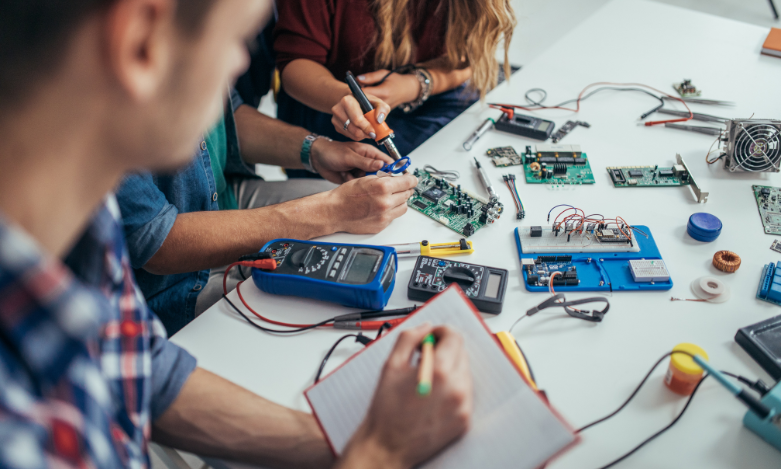Retail Help Button Made Possible by Cyth ATE Equipment
- Mar 1, 2023
- 2 min read
Updated: Mar 27, 2024

The Challenge
An electronics company approached us with the need for a system to test circuit boards featured in retail help button systems.
The Solution
Using hardware and software to create a full turnkey solution for printed circuit board (PCB) testing we were able to provide the client with increased test efficiency and improved quality assurance.
Customer Device Summary
Retail help button system:
When the button on the customer’s device is pressed, it sends out a radio frequency (RF) signal to a receiver/computer server which plays a track over the store audio, for example, “An associate is needed in the paint aisle”.
The audio plays until the button is pressed again, meaning that the customer has been helped by a store associate.
The device is battery-powered and is installed using in-aisle mounts, wall mounts, and stanchion mounts.
Critical to the device’s success was efficient power consumption so the battery life would last years in a retail setting.
This required the system to enter “deep sleep”, or a low energy usage mode when not in use.

PCB Automated Test Fixture
Our two full turnkey enclosures for PCB testing ran respectively an in-depth diagnostics test and an RF test.
Both bed-of-nails style fixtures had a PXI system, an embedded industrial PC, and were programmed using LabVIEW and NI TestStand to ensure reliable test sequencing.
Left: “Bed of nails” PCB test fixture. Right: Fixture’s internal wiring and cabling.

System Order of Operations:
The automated test enclosure is opened by the operator.
Eight of the client circuit boards are slotted into provided nests.
The enclosure cover is closed to provide electrical connections to the board.
The system automatically uploads the board’s audio files.
A power consumption test is performed simulating the device “asleep” vs. “awake”.
Signal is validated from the RF signal analyzer (signal generator).
All data read and stored on PXI hardware.
The operator opens the enclosure cover, removes tested boards, and repeats.
Delivering the Outcome
Overall, our engineering team was able to deliver a full turnkey solution of two PCB test enclosures. This was achieved by integrating NI PXI hardware and NI TestStand software into a system that automated the procedural sequence of testing several circuit boards at once. In collaboration with the client, we were able to achieve a design iteration that best tested eight circuit boards simultaneously and came within the budget of their research and development phase. In delivering the customer an automated test solution capable of validating their product, we were able to improve the client’s test efficiency and quality assurance. Our equipment is still in use by the customer as their retail help button system is featured in most North American department stores including Target, Walmart, Lowes, Home Depot, etc.
Technical Specifications
1 x RF Faraday PCB Automated Test Enclosure
1 x Dell Inspiron Industrial Embedded PC
1 x NI PXIe-1078 Chassis
1 x NI PXIe-4113
1 x NI PXIe-4112
1 x NI PXI-2564
1 x NI PXI-8432
1 x NI PXI-6229
1 x NI PXI-2534








